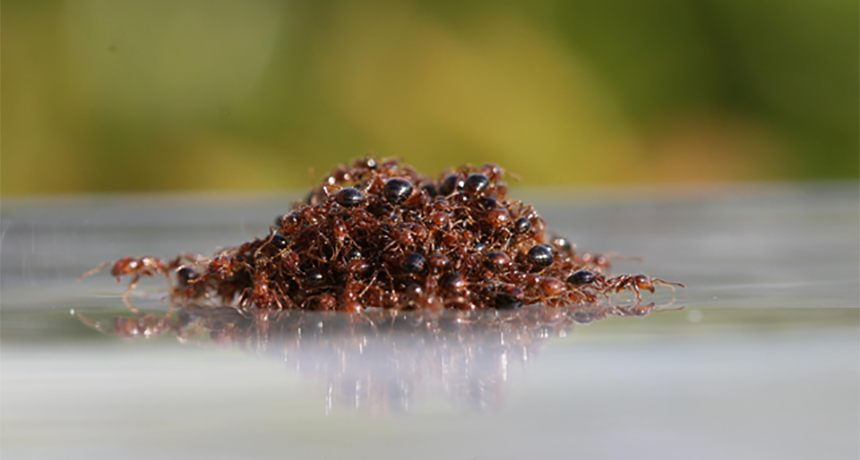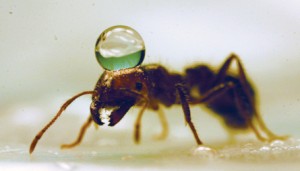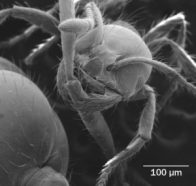Ants aweigh!
In a flood, fire ants cling together to keep afloat

Don’t go it alone: Ants cling to each other to create a floating raft.
Nathan Mlot and Tim Nowack.
Fire ants are famous for their construction projects (as well as their burning bites). When they need to, colonies of these insects turn themselves into ladders, chains and walls. And when floodwaters rise, a colony can float to safety by making an unusual boat. The ants hold tightly to each other, forming a buoyant disk atop the water. The ant-raft may float for months seeking safe harbor.
In a recent study, scientists from the Georgia Institute of Technology in Atlanta found that fire ants form seals so tight that not even water can get through. The researchers say it’s as though the bugs are weaving a waterproof fabric out of themselves. The ants on the bottom don’t drown, and the ants on the top stay dry. Working together, the ants float to safety — even though a single ant alone in the water will struggle to survive.
“They have to stay together as a colony to survive,” Nathan Mlot told Science News. Mlot is an engineer who worked on the new study.

Fire ants and water don’t mix. The ant’s exoskeleton, or hard outer shell, naturally repels water. A drop of water can sit on top of the ant like a backpack. When an ant does end up underwater, tiny hairs on its body can trap bubbles of air that give the bug a buoyancy boost.
But that’s just one ant. No matter how well it repels water, a single ant doesn’t explain how a whole colony stays afloat. To investigate the science behind the ant-raft, the Georgia Tech researchers went out and collected thousands of fire ants from the sides of Atlanta roads. (Fire ants are easy to find if you live in the southern United States. They live in and under large mounds of loose soil that can appear quickly.) The species the researchers collected was Solenopsis invicta, which is better known as the red imported fire ant, or RIFA.
The scientists placed hundreds or thousands of ants at a time in the water. A group of ants took about 100 seconds, on average, to build a raft. The researchers repeated the experiment multiple times. Each time, the ants organized themselves the same way, creating a raft about the size and thickness of a thin pancake. (The more ants, the broader the pancake.) The rafts were flexible and strong, staying together even when the researchers pushed the rafts underwater.

The scientists then froze the rafts in liquid nitrogen and studied them under powerful microscopes to figure out how the ants kept everyone safe and the water out.
The team found that some ants used their mandibles, or jaws, to bite other ants’ legs. Other ants joined their legs together. Thanks to these tight bonds, say the scientists, the ants did a better job at keeping the water away than any one ant could do on its own. By working together, thousands of ants can stay alive in the face of a crisis like a flood by using their own bodies to build a boat.
Julia Parrish, a zoologist at the University of Washington in Seattle who did not work on the study, told Science News this is a case where a group of ants working together accomplishes more than you might expect by studying individuals. “The properties the group displays are not necessarily predictable by just looking at one individual,” she said.
POWER WORDS (adapted from the New Oxford American Dictionary)
mandible The jaw or jawbone.
exoskeleton A rigid external covering for the body in some invertebrate animals, especially insects, providing both support and protection.
fire ant A tropical American ant that has a painful and sometimes poisonous sting.
colony A community of animals or plants of one kind living close together or forming a physically connected structure : a colony of seals.
liquid nitrogen The ultracold liquid form of the element nitrogen, which scientists often use to quickly freeze materials.







